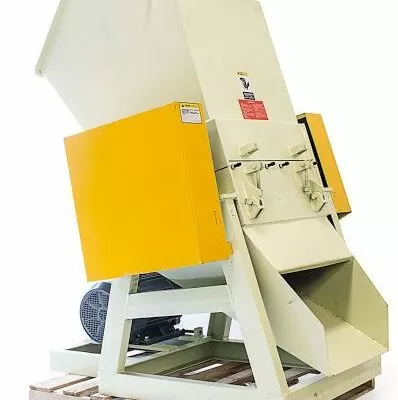Plastic bottles are everywhere. From your morning smoothie to your post-workout hydration, they’re a staple in modern life. But what happens when you’re done with them? Do you just toss them in the recycling bin and hope for the best? Or do you take matters into your own hands and crush them? If you’ve ever wondered how to crush plastic bottles effectively, you’re in the right place. Let’s dive in.

Crushing plastic bottles isn’t just about saving space in your recycling bin—it’s about being efficient, eco-friendly, and downright practical. Whether you’re a recycling enthusiast or just someone who hates clutter, learning how to crush plastic bottles properly can make a big difference. And trust me, as the CEO of Amige, a company that’s all about innovative solutions, I’ve seen my fair share of crushed bottles.
So, why should you care about crushing plastic bottles? Well, aside from the obvious space-saving benefits, it’s also a great way to reduce your carbon footprint. Plus, it’s oddly satisfying. Ready to become a bottle-crushing pro? Let’s get started.
Why Should You Crush Plastic Bottles?
First things first, why bother crushing plastic bottles at all? Can’t you just throw them in the recycling bin as they are? Sure, you can. But crushing them has some serious advantages.
For starters, crushed bottles take up less space. This means you can fit more into your recycling bin, reducing the number of trips you need to make to the recycling center. It also means fewer collection trucks on the road, which is a win for the environment.
Crushing bottles also helps prevent them from rolling away or getting stuck in recycling machinery. This makes the recycling process more efficient and less prone to breakdowns. And let’s be honest, who doesn’t love a smoother recycling process?
What’s the Best Way to Crush Plastic Bottles?
Now that we’ve established why you should crush plastic bottles, let’s talk about how to do it. There are a few methods you can use, depending on your tools and preferences.
The simplest way is to use your hands. Just remove the cap, squeeze the bottle to let out the air, and then twist or press it down. This method works well for smaller bottles, but it can be a bit of a workout for larger ones.
If you’re dealing with a lot of bottles or just want to save some energy, you can use a bottle crusher. These devices are designed to crush bottles quickly and efficiently, and they’re a great investment if you’re serious about recycling.
For those who love a DIY approach, you can even make your own bottle crusher using basic materials like wood and metal. There are plenty of tutorials online that can guide you through the process.
Can You Crush Plastic Bottles Without a Cap?
Ah, the age-old question: to cap or not to cap? When it comes to crushing plastic bottles, the answer is clear—always remove the cap before crushing.
Why? Because the cap is usually made from a different type of plastic than the bottle itself. This means it needs to be recycled separately. Leaving the cap on can also trap air inside the bottle, making it harder to crush.
So, before you start crushing, take a moment to unscrew the cap. It’s a small step, but it makes a big difference.
What Happens to Crushed Plastic Bottles After Recycling?
Once you’ve crushed your plastic bottles and sent them off for recycling, what happens next? The journey of a crushed bottle is actually quite fascinating.
First, the bottles are sorted by type and color. Then, they’re cleaned and shredded into small pieces. These pieces are melted down and formed into pellets, which can be used to make new products.
From there, the possibilities are endless. Crushed plastic bottles can be turned into everything from clothing to furniture to new bottles. It’s a great example of the circular economy in action.
Are There Any Downsides to Crushing Plastic Bottles?
While crushing plastic bottles has many benefits, it’s not without its drawbacks. One potential issue is that crushed bottles can be harder to sort at recycling facilities. This is especially true if they’re mixed with other materials.
Another concern is that crushing bottles can sometimes lead to contamination. If the bottles aren’t properly cleaned before crushing, any leftover liquid or residue can cause problems during the recycling process.
To avoid these issues, make sure to rinse your bottles thoroughly before crushing them. And always follow your local recycling guidelines to ensure that your efforts are as effective as possible.
How Can You Make Crushing Plastic Bottles a Habit?
Crushing plastic bottles is a great habit to get into, but like any habit, it takes a bit of effort to make it stick. Here are a few tips to help you get started.
First, make it easy. Keep a bottle crusher or a designated crushing area near your recycling bin. This will remind you to crush your bottles every time you recycle.
Second, make it fun. Challenge yourself to see how many bottles you can crush in a week, or turn it into a game with your family. The more enjoyable you make it, the more likely you are to stick with it.
Finally, make it meaningful. Remember that every bottle you crush is a small step towards a cleaner, greener planet. That’s something to feel good about.
Conclusion
Crushing plastic bottles might seem like a small act, but it’s one that can have a big impact. From saving space in your recycling bin to reducing your carbon footprint, there are plenty of reasons to give it a try. So, the next time you finish a bottle, don’t just toss it—crush it. Your planet (and your recycling bin) will thank you.
That’s it, folks! Now go forth and crush those bottles like the eco-warrior you are. And remember, at Amige, we’re always here to help you find innovative solutions for a better world. Cheers to crushing it! 🥂
